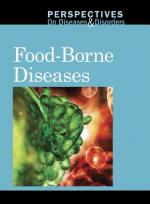|
This section contains 2,030 words (approx. 7 pages at 300 words per page) |

|
John M. LaForge
About the author: John M. LaForge is codirector of Nukewatch, an antiwar group, and editor of its quarterly newsletter, the Pathfinder. His articles have appeared in Z Magazine, Earth Island Journal, and the Progressive.
Irradiation of food has not been proven to be a safe, effective method of reducing food-borne illnesses. It does not kill all diseasecausing pathogens, especially viruses, and no studies of long-term effects of eating irradiated foods have been conducted. Further, irradiation destroys B vitamins and changes the taste and aroma of meat. Because food irradiation uses cesium-137, a hazardous radioactive waste material, it endangers the workers who handle it and presents a potential risk of environmental contamination. For all these reasons, the government should prohibit irradiation of food until the safety of the process and the wholesomeness of irradiated...
|
This section contains 2,030 words (approx. 7 pages at 300 words per page) |

|




